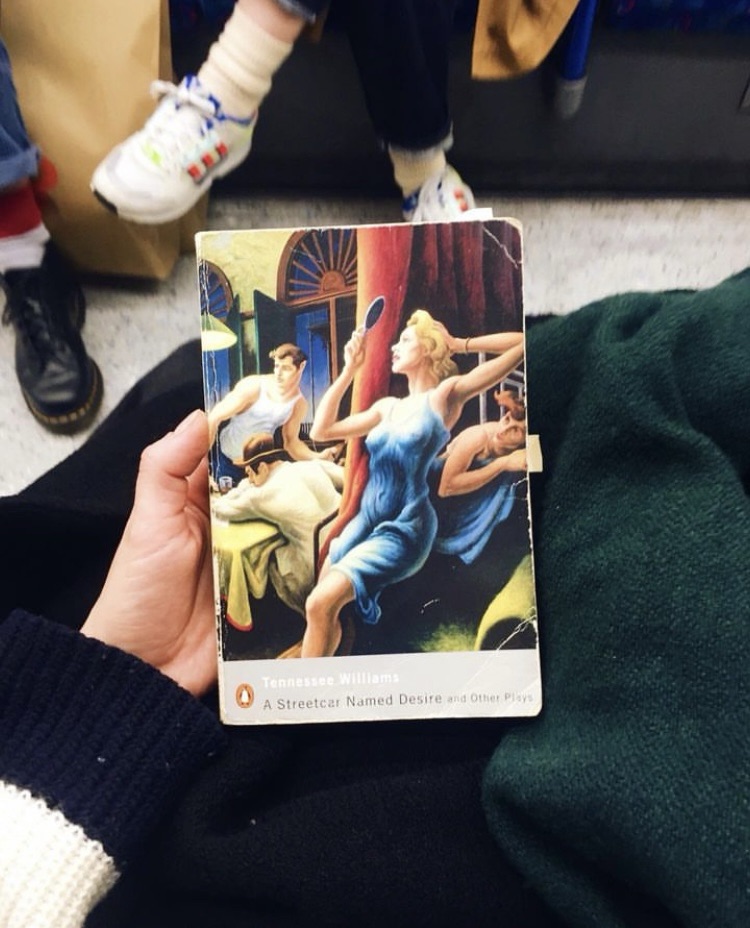
I finished the weekend by finishing what I’ve been reading this past week: Tennessee Williams’ A Streetcar Named Desire. I picked it up in the charity shop when the Almedia production with Paul Mescal was announced in the hope of rereading it before seeing it but due to the high demand I never managed to get tickets. Either way, it is a really good play and a fun read.
I’ve read it before, I’ve seen several productions of it but this was definitely my best experience with it so far. It’s such a well-crafted play, very atmospheric in its scene directions and with an incredible use of light and colour. There are different hues of blue, strong primary colours and the softer pastels that Blanche hides behind, further emphasised by her name meaning ‘white’, as there is so much colour around her that she is never quite part of.
The story itself is tragically moving. Blanche’s slow downfall and the realisation of what has happened to her is expertly revealed bit by bit. She is deluded but also highly relatable and you cannot help but pity her.

Stanley’s horrible character is oozing off the page from the very beginning. Can you not picture this man in front of you? Is he not revolting? He actually reminded me of one of the customers I had in the coffee shop where I used to work and who, in my head, I always thought “Oh. here’s Stanley Kowalski again”.
I have held a position as a reader at a theatre for the last few years and as part of that I have read so many unsolicited play submissions of varying quality that it was such a relief to read a play that is really good, where everything has been carefully considered (including the stage craft). As such, I would really recommend it not only as a stage production but also to read.







